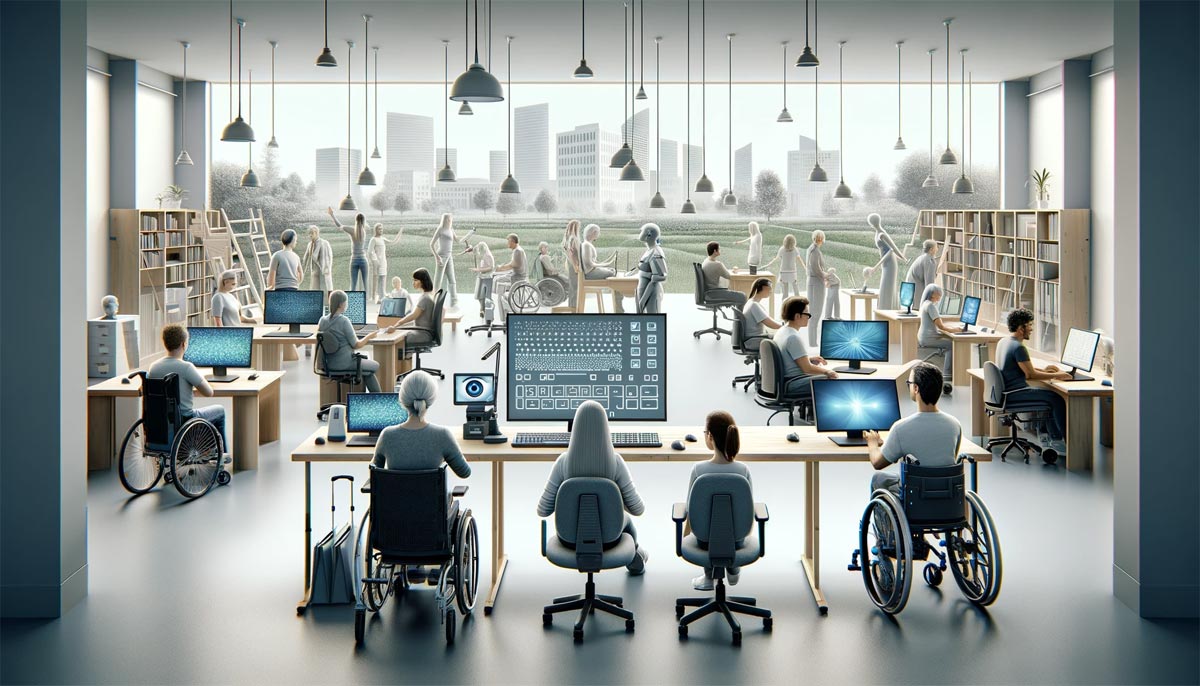
Assistive Computer Technologies for Individuals with Disabilities
In today's digital age, assistive computer technologies play a crucial role in enhancing the quality of life for individuals with disabilities. These innovative tools and devices are designed to break down barriers to information, communication, and independence, offering solutions tailored to meet the unique needs of users. This comprehensive guide delves into the myriad of assistive technologies available, shedding light on their impact, accessibility, and the transformative potential they hold.
Understanding Disabilities and Computer Use Challenges
Disabilities can range from physical and visual impairments to auditory and speech-related challenges, each presenting its own set of obstacles in computer use. Physical disabilities may hinder the ability to use standard input devices like keyboards and mice. Visual impairments can make it difficult to read or interact with on-screen content, while hearing impairments affect the ability to receive audio information. Speech recognition difficulties can limit the effectiveness of voice-controlled systems.
Navigating the World of Assistive Technologies
Adaptive Software Solutions
- Screen Readers: Software that vocalizes or Brailles text displayed on the screen, allowing those with visual impairments to access digital content.
- Voice Recognition Software: Converts spoken words into text and executes voice commands, offering hands-free computer operation for individuals with physical disabilities.
Innovative Hardware Devices
- Adaptive Keyboards: Feature larger keys, alternative layouts, or customizable interfaces to accommodate users with limited mobility or dexterity.
- Braille Displays: Translate text into Braille characters, enabling blind or visually impaired users to read text through touch.
Enhancing Accessibility through Eye-Tracking and More
- Eye-Tracking Technology: Allows users to control computers using eye movements, beneficial for those with severe physical disabilities.
- Mobility Aids: Such as joystick controls, touch screens, and specialized mice, cater to a wide range of mobility needs, making computer access more inclusive.
Real-World Impact: Success Stories and Applications
Case studies highlight the transformative effect of assistive technologies. For instance, students with disabilities leveraging screen readers to excel in their studies, or professionals using voice recognition software to maintain productivity at work. These stories underscore the empowerment and independence that such technologies can provide.
Future Directions in Assistive Technology
Innovation continues to push the boundaries of what's possible in assistive technology. Emerging trends include more sophisticated artificial intelligence (AI) applications for personalized support, improvements in natural language processing for more effective voice recognition, and the integration of assistive devices with mainstream technology to ensure broader accessibility.
Setting the Standard: Accessibility Guidelines
The development of assistive technologies is guided by comprehensive accessibility standards and guidelines. These frameworks ensure that products and services are usable by as wide a range of people as possible, emphasizing the importance of inclusivity in technological design.
Broadening Horizons: Education, Employment, and Daily Living
Assistive technologies significantly impact education by providing alternative ways for students with disabilities to engage with learning materials. In the workplace, these tools can level the playing field, allowing individuals to perform job tasks effectively. Everyday activities, from shopping online to socializing via social media, become more accessible, enhancing overall quality of life.
Conclusion
Assistive computer technologies offer invaluable resources to individuals with disabilities, fostering greater independence, accessibility, and engagement with the world. As we look to the future, the continued advancement and integration of these technologies promise even greater opportunities for empowerment and inclusion. It is imperative that we, as a society, continue to support innovation and development in this field, ensuring that everyone has the tools they need to thrive in the digital age.
This guide aims not only to inform and educate but also to inspire action and advocacy. By understanding the vast potential of assistive technologies, we can collectively work towards a more accessible and inclusive world.
Computer Technology




